The Last Giant: The Cultural Clout of Willie Mays
Each summer Sports Illustrated revisits, remembers and rethinks some of the biggest names and most important stories of our sporting past. This year’s WHERE ARE THEY NOW? crop features a Flying Fish and a Captain, jet packs and NFTs, the Commerce Comet and the Say Hey Kid. Come back all week for more.
Willie stayed in. He wouldn’t come out to the little balcony at the top of the staircase outside the elevated center field clubhouse after the New York Giants’ final game at the Polo Grounds in 1957, despite the crowd clamoring for a tip of his famous flyaway cap. A five-year-old boy, holding his father’s hand, shouted: “Let me see you once more, Willie,” but Willie had vanished, as he would later do on Bewitched.
Dorothy Kilgallen, the columnist and game-show panelist, once asked Willie Mays on What’s My Line?: “Are you accustomed to appearing before audiences?” “Yes,” Mays said, drawing laughter. The blindfolded Kilgallen asked: “Are you in some form of the amusement industry?” “Yes,” Mays replied. He was indeed in the amusement industry. But he wasn’t a singer. And he didn’t always do encores.
On the contrary, singers and other artists wanted what Mays had. “If I played baseball like you,” Frank Sinatra told Mays, “I’d be the happiest guy in the world.” Ernest Hemingway was to hunting as Mays was to hitting, at least according to Ernest Hemingway. In his sixties, Groucho Marx marked the pitiless march of time by the swift passage of another Willie Mays summer.
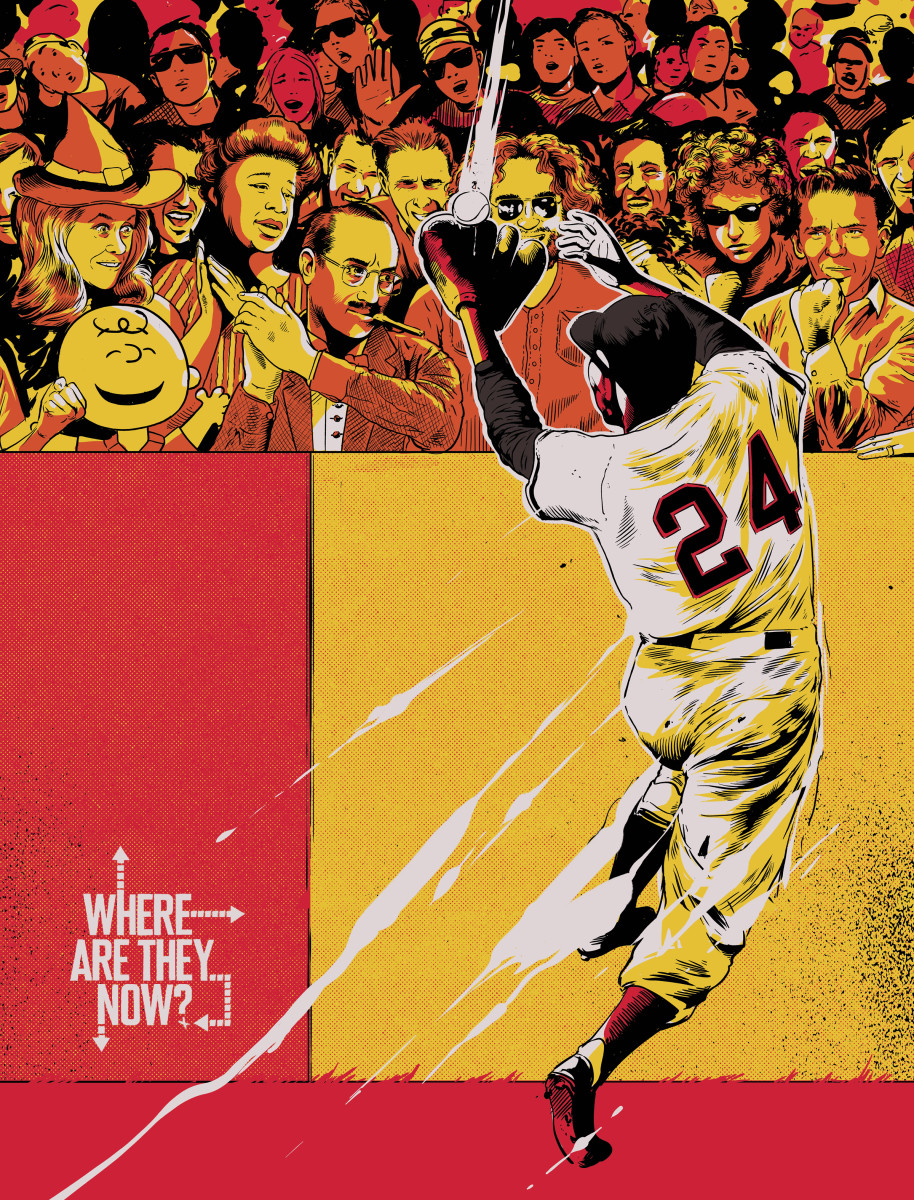
As the general public and public figures clamored for Mays on various papal balconies, wanting him to bestow the blessing of a signature or a snapshot, Mays eventually withdrew, as besieged idols must do. But in 2007, he appeared on a stage in Sacramento with other geniuses or their proxies. There they stood, Willie Mays and Steve Jobs, Say Hey and Hey Siri, alongside the sons of Jonas Salk and John Wayne. “Absolutely incredible,” said another of these living wax museum figures, of the men assembled for induction into the California Hall of Fame, “especially when you have Willie here.” It was Tiger Woods, one of the few men of the 21st century who had lived in that swirl, and had served as a measuring stick, his name invoked as the best-ever at something difficult and popular, with the attention that such a gift will bring.
Mays was and remains, at age 90, one of the rarest of people, famous to the world-famous and envied by the enviable. He left stars starstruck. Cary Grant, a regular at Dodger Stadium, in 1971, said: “I can’t stand Willie Mays. Imagine, knowing when a fellow is going to hit the ball and how far and where and at what instant it will come down at a given point and being there when it does.”
Ella Fitzgerald, who collected autographed baseballs, was photographed with Mays, in his Giants road flannels, looking bewitched, bothered and bewildered.
Fitzgerald, Grant and Sinatra could perform their art in a studio. Willie Mays belonged to that class of artists, like carnival caricaturists, whose art is only performable in public, before outstretched hands, accompanied by organ music, the air hot-dog-scented. For more than 150 days every year, his daily schedule was in every newspaper in America, putting him in the path of autograph-seekers, back-slappers, well-wishers and ill-wishers, on trains and planes, in parking lots, hotel lobbies, at valet stands and in restaurants all over the US of A. The U-S-of-Say-Hey.
The Grateful Dead sang the national anthem before a San Francisco Giants game in 1993. Mays was at Candlestick Park that day. “Mr. Mays,” said the Grateful Dead publicist Dennis McNally, “can I introduce you to Jerry Garcia? He’s going to be singing the national anthem today.”
“No!” Mays replied.
Garcia, the principal songwriter, vocalist and lead guitarist for one of the world’s most enduringly popular bands, watched the exchange with delight and envy. “[Jerry] was so fed up with people wanting something from him,” McNally told author Linda Kelly for her book Deadheads, “that the idea that somebody didn’t give a s--- who he was absolutely made his day.”
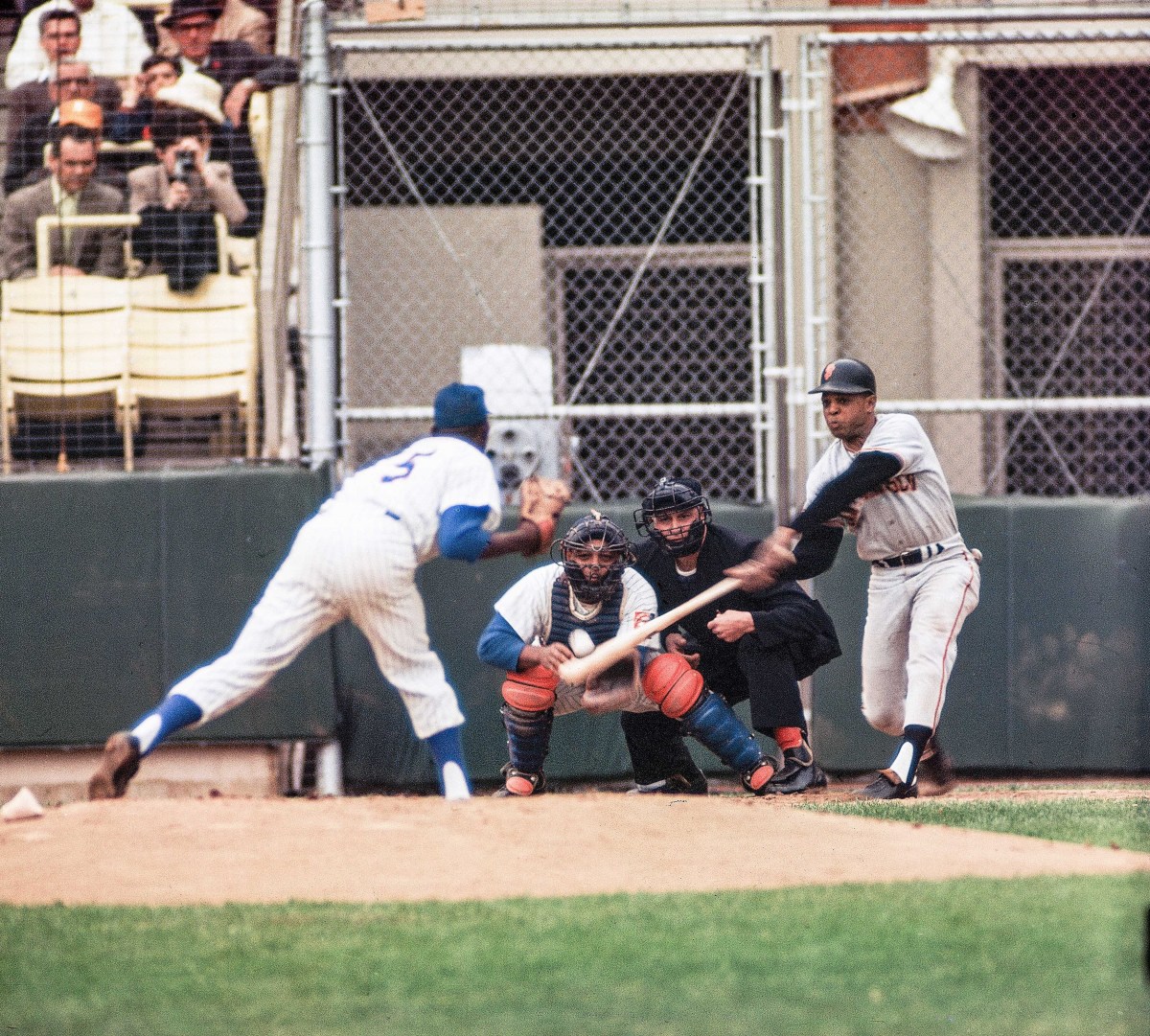
Shake the hand that shook the hand of P.T. Barnum and Charlie Chan. In 1958, after the Giants had left New York for San Francisco, an old man approached Mays during batting practice at Seals Stadium. “Bet you don’t know who I am,” he said.
“Nope,” Mays replied.
“Give you a hint. My first name is Ty.”
Ty Cobb had once been the baseball player that celebrities sought. Cobb had been in spring training with the Philadelphia Athletics in 1927, near the end of his playing career, when he pitched to an 80-year-old Fort Myers resident named Thomas Alva Edison.
Thirty-one years later, at Seals Stadium, Mays dutifully posed for a photograph with the 71-year-old Cobb, and shook the hand that shook the hands of Thomas Edison and Henry Ford, linking the Model T and the iPhone 4: that’s Ford to Cobb to Mays to Jobs if you’re scoring at home.
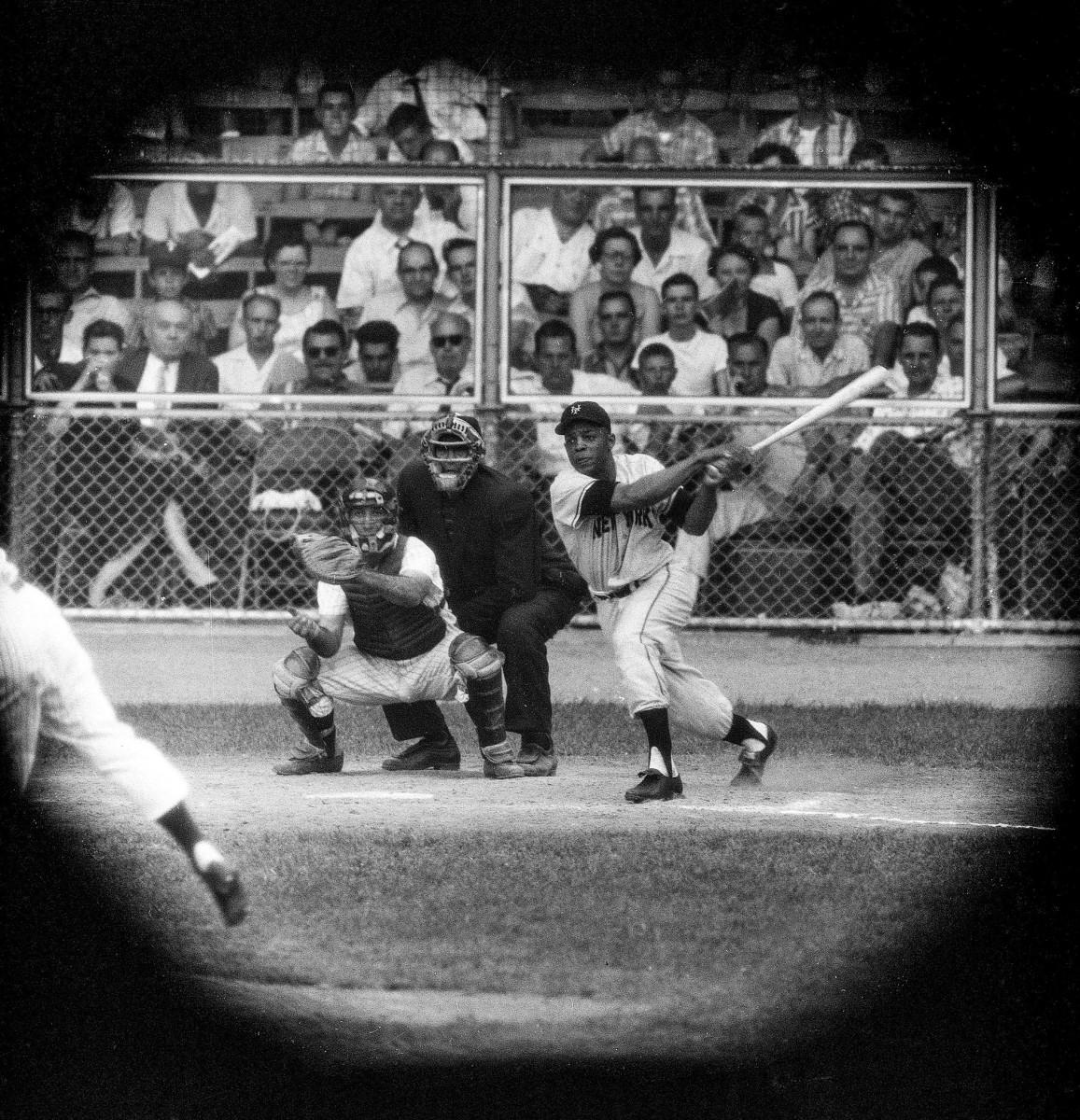
Where are they now, these giants with a lowercase g? In the 21st century, when baseball is deep in the shadow of other amusements, it can be difficult to fathom. But 70 years ago, when he made his debut with the Giants, and for the next 18 years at least, Willie Mays was not merely a transcendent baseball player, like Mike Trout—or transcendent athlete, like Michael Jordan—but a transformative figure in the national psyche, a skeleton key that opened almost any door into American life. Peerless on the field, Mays was more often paired with other artists, many of whom measured themselves against him, and almost always found themselves wanting.
Disgorged from the Deep South, in glorious full bloom in the 1950s, inducted into the U.S. Army in his white-hot prime, holed up in California in the ’60s and in artistic decline by ’70: In all of these ways, Mays was twinned with Elvis Presley, both men eventually finding themselves, in middle age, employed by casinos.
By 1970, Presley and Mays were locked into memory forever, with an enduring body of work behind them, and moments of greatness still possible on any given night. Elvis opened the Las Vegas epoch of his career at the International Hotel in ’70. This was the High Renaissance of Late Elvis—when the King was all jumpsuits, sideburns and sunglasses. But he was still fit and handsome, Elvis in excelsis. Cary Grant was in the opening-night audience. So was filmmaker Denis Sanders, making the MGM documentary Elvis: That’s the Way It Is, in which he interviewed a young Presley fan in a powder-blue cardigan and eyeglasses so thick as to appear opaque. The man, about 30—a teenager in the late 1950s—told Sanders that the enduring appeal of Elvis is that “he can do it all.” That is, he can sing, dance, act, tell stories and just stand there, looking like a million dollars, with a humility that conveys authenticity. “He is,” says this unidentified Elvis fan, “the Willie Mays of entertainment.”
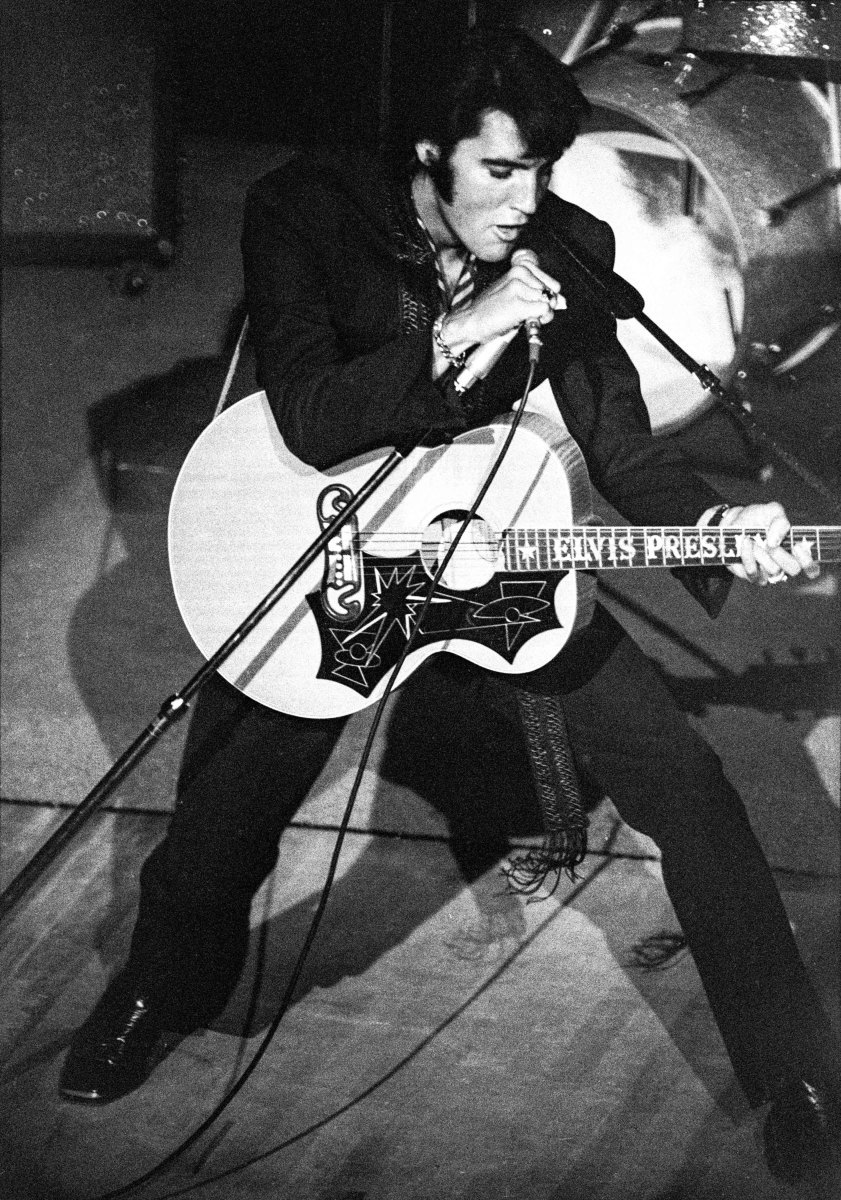
But Willie Mays, like Elvis, was also supremely entertaining, and Willie Mays, unlike Elvis, was indisputably Willie Mays, making Willie Mays, even more than Elvis Presley, the Willie Mays of entertainment.
Perhaps Elvis was the Willie Mays of rock and roll, though the rock musician George Thorogood thought that honor belonged to Chuck Berry: “He had it all covered. He was kind of the Willie Mays of rock and roll. … It’s hard to imagine a time when Johnny B. Goode didn’t exist. That’s when you know it’s a classic.”
It’s hard to imagine a time when Willie Mays didn’t exist. These artists, seemingly without beginning or end, are beyond time, especially now, in the absence of a 20th-century monoculture. There were three networks and a few movie studios. Newsstands teemed with magazines—Time, Life, Look, Collier’s, Boys’ Life, Jet, Ebony, SPORTS ILLUSTRATED, Sport, The Sporting News—and Willie Mays was on the cover of all of them.
Last December, New Yorker critic Hua Hsu wrote of the futility in calling any artist “better than the Beatles,” a phrase that “simply entrenches the Beatles as a cultural monolith. Invoking their name connects us to the possibility of some universally agreed-upon standard of greatness, a kind of consensus that no longer seems within reach.” So it is with Willie Mays, whose insuperable status is beyond dispute, as if fixed by the International Bureau of Weights and Measures.
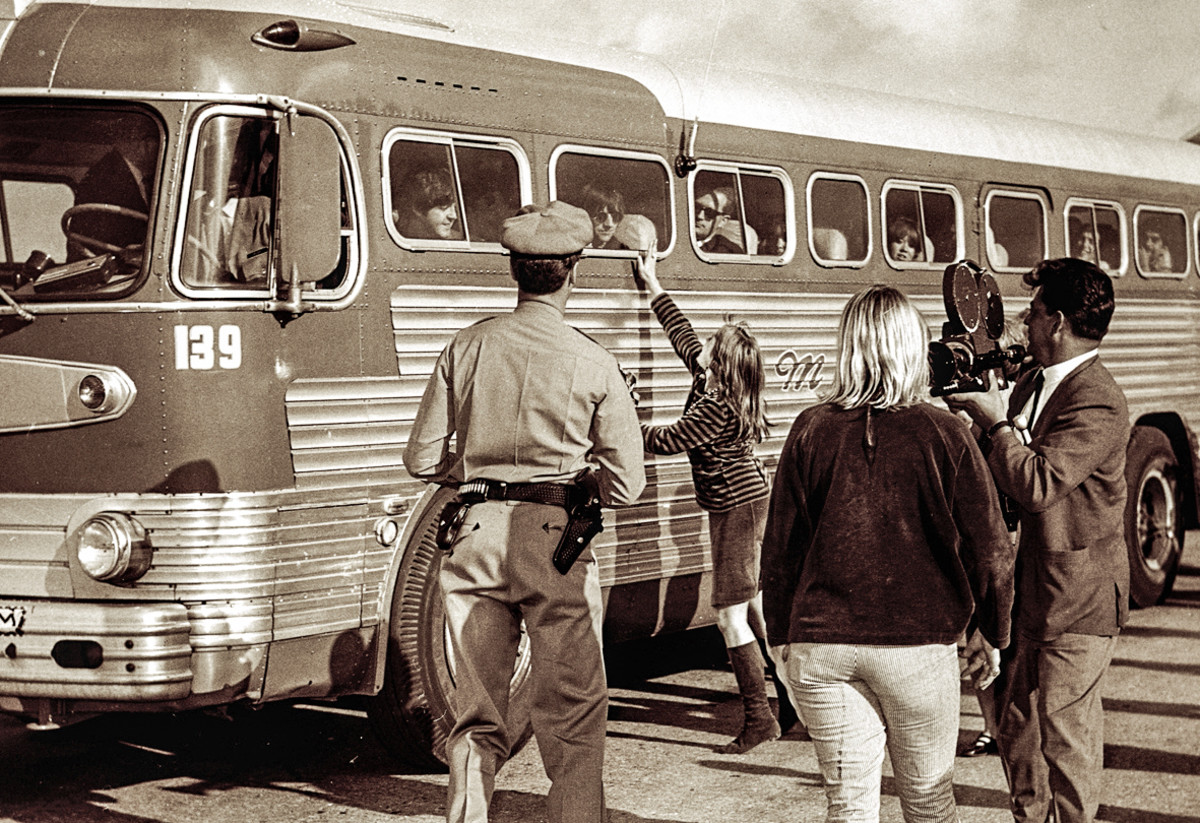
The Beatles. By 1966, touring had physically imperiled the band, whose crowds had grown terrifyingly large—200,000 lined the streets in Adelaide, Australia, in ’64—and dangerous. Roughed up by police in Manila after declining a reception with Imelda Marcos, George Harrison famously said: “We’re going to have a couple of weeks to recuperate before we go and get beaten up by the Americans.” And so their last ticketed public performance came on Aug. 29, 1966, at Candlestick Park in San Francisco, where the stage was constructed at second base. Performing inside a cage of protective fencing, the Beatles had become—in God’s heavy-handed metaphor—prisoners of fame.
Teens clambered over the outfield fence during the 33-minute set and rushed toward the stage, as cops chased the fans around center field. Center field at Candlestick was Mays’s fenced-in stage, of course, but he was in Philadelphia that evening, getting an RBI double off Jim Bunning.
For their own protection, the Beatles were obliged to leave the Candlestick stage in an armored truck, of the sort used to transport money. Mays had no such option; baseball could only be performed live. He remained onstage as the Beatles retreated to Abbey Road, Say Hey and “Hey Jude” forever parting ways.
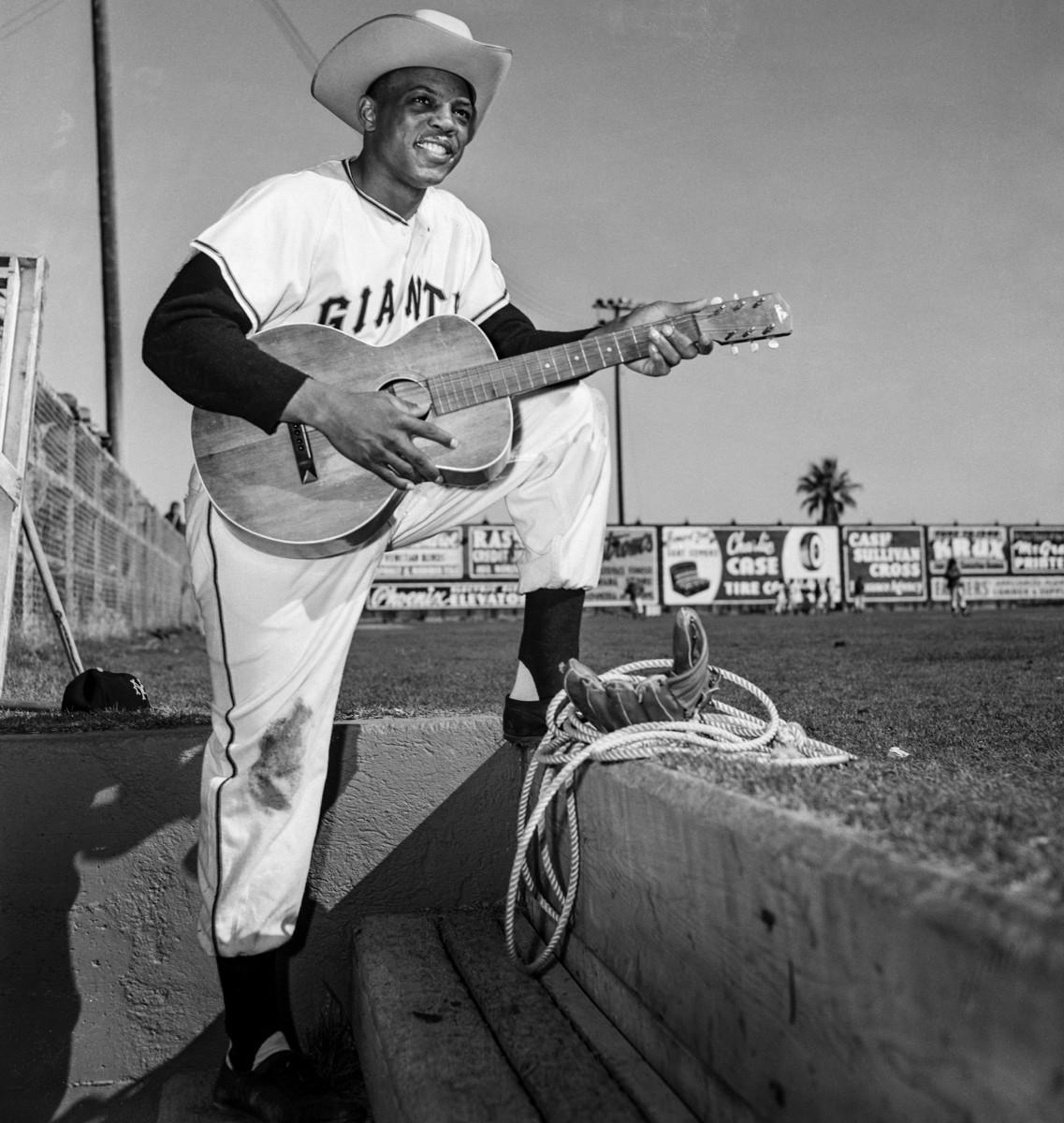
When that 1966 season ended, Mays guest-starred as a warlock, Wondrous Willie, on Bewitched, in which he appeared at a Halloween party with Elizabeth Montgomery (who played Samantha), Dick York (Darren), Paul Lynde (Uncle Arthur) and Agnes Moorhead (Endora).
Darren: Sam, isn’t that Willie Mays? What’s he doing here?
Sam: Oh, Darren, really.
Darren: You mean he’s a, uh, uh [warlock] ...
Sam: The way he hits home runs? What else?
Mays, the premise went, was supernatural. It was the only explanation. “Gee,” he said near the end of his scene, while eating a deviled egg at the party, “I think it’s about time for me to pop out to the ballpark.” And then he vanished.
After the take, however, Mays didn’t vanish. He couldn’t. Montgomery produced a copy of The American Diamond, by Branch Rickey, and Mays signed his photograph within its pages. Then he signed autographs for Moorhead, York and Lynde. And so it went, wherever he went. Within five years, Mays was vanishing after games. “No one ever sees Willie Howard Mays unless he has a glove, a bat, a driver or a putter in his hand,” Jim Murray wrote in 1971. “No one has ever seen him in shoes that didn’t have cleats on them. He is never seen with a glass or a chorus girl in his hand. He becomes invisible 10 minutes after he has turned off the shower.” Forget about “Where is he now?” and consider, for a moment, “Where he was then.”
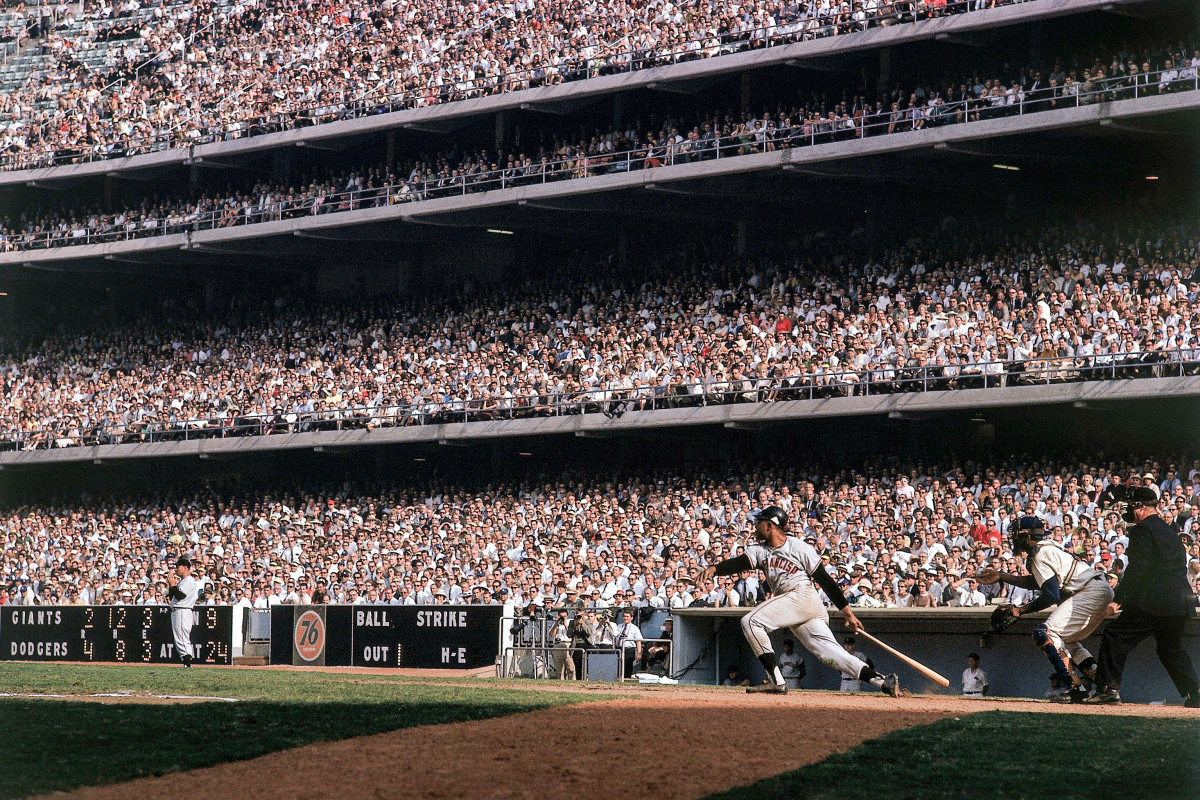
He was everywhere, in uniform, because baseball was still in the national water supply, even as late as 1967, when Mays played in a celebrity softball game at Dodger Stadium. The game was televised in prime time on NBC, with Dodgers announcer Vin Scully on play-by-play and comedian Jerry Lewis on color. In the fourth inning, while facing actor Dale Robertson, Mays hit a towering fly to left field, where Woody Allen called off center fielder Peter Falk and made the catch. The Brooklyn-born Allen, 16 when Mays made the majors, would describe the moment in later interviews as a dream come to life.
“Why is life worth living?” Allen’s character, screenwriter Isaac Davis, asks in the 1979 film Manhattan. “That’s a very good question. Well, there are certain things I guess that make it worthwhile. Like what? O.K., I would say, what, Groucho Marx, to name one thing, and Willie Mays, and the second movement of the Jupiter Symphony, and uh, Louis Armstrong, recording of ‘Potato Head Blues,’ uh, Swedish movies naturally. Sentimental Education by Flaubert. Uh, Marlon Brando, Frank Sinatra, those incredible apples and pears by Cézanne ...”
Deciding who is the reigning cultural colossus of any age is always a multiple-choice exam. But the possible answers are not infinite. “Some men define a generation,” the sportswriter Jimmy Cannon wrote in 1969. “It may be the Beatles or Lenny Bernstein or Frank Sinatra or Picasso or Willie Mays or Wilt Chamberlain or Marlon Brando or Tennessee Williams.”
Or Bob Dylan, who, like the rest of TV-watching America, saw Green Bay Packers quarterback Bart Starr in a commercial in the early 1960s. A young man was applying Brylcreem at a locker room sink when Starr intervened: “Sam,” Starr asked, “You still using that greasy kid stuff?” Old Bart knew what Young Sam didn’t: “Vitalis keeps your hair neat all day without grease.”
Brylcreem and Vitalis were hair-care products for white men. “Out of the shower comes the football man, with a bottle of oil in his hand,” Dylan sang in “I Shall Be Free” in 1964. “Greasy kid stuff. What I wanna know, Mr. Football Man, is what do you do about Willie Mays, Martin Luther King [and the Nigerian drummer Babtunde] Olatunji?”
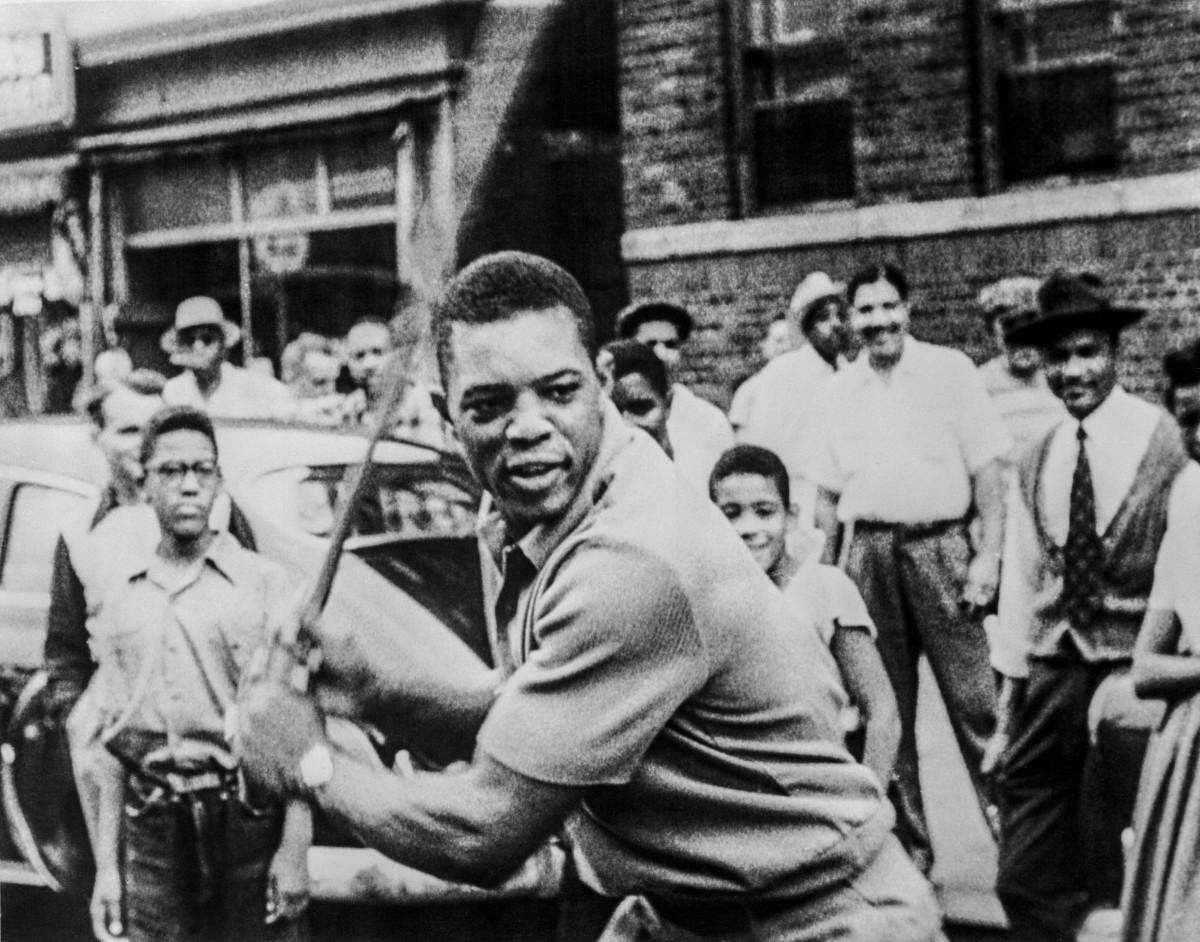
A journalist, writing in the London Guardian in the summer of 1954, tried to explain Mays to a British audience. “Willie Mays is a symbol as much as the Supreme Court decision outlawing segregation; more perhaps than Ralph Bunche’s Nobel [Peace] prize. For in the world of the Harlem Negro, playing for the Giants, [or] being ‘Bojangles’ Robinson, the great tap dancer, or Sugar Ray [Robinson] is a tangible and undeniable proof of proficiency in the hard world of sport and entertainment, where no holds are barred and merit alone counts.”
A month later, on Sept. 27, 1954, NBC aired The Tonight Show nationally for the first time, with host Steve Allen. The network needed a big guest star for the debut, and none shone brighter in the fall of ’54 than Willie Mays, who joined the broadcast live, from his home in Harlem, the image electronically conveyed downtown to the Rockefeller Center studio via expensive camera and cable connections. Mays, in pajamas, was serenaded at his apartment window by the singer Steve Lawrence, and then chatted via telephone, on split-screen, with the host.
Two days later, in Game 1 of the World Series against Cleveland at the Polo Grounds, he made the most famous catch in baseball history, which he always described as not his best. His best, Mays said, was against Brooklyn, Opening Day in 1952, bases loaded, two outs, a line drive by Bobby Morgan that Mays chased until he hit the unpadded center-field wall at Ebbets Field. He fell to the gravel warning track, knocked out and awoke to find Giants manager Leo Durocher and Dodgers second baseman Jackie Robinson standing over him. Durocher came to see if his center fielder was okay, Mays said, and “Jackie came to see if I caught the ball.”
But if The Catch in ’54 was no big deal to Mays, it was for the man who flied out, Cleveland’s Vic Wertz. That deep drive in the World Series opener was, he told Ed Sullivan, one of his greatest thrills in baseball, at least “up until he caught the ball.” Wertz gestured toward Mays, who shared the stage with him, the same stage on which Elvis and the Beatles would soon conquer the U.S.

Read More Where Are They Now? Stories
There was no shame in being eclipsed by Mays. For ballplayers, it was a privilege to bask in his reflected blaze, and see how their best measured up to his. The Hall of Fame lefthander Warren Spahn gave up Mays’s first hit in the big leagues, a home run at the Polo Grounds, and said, “For the first 60 feet, it was a hell of a pitch.”
Mays was so magnetic during October ’54, when the Giants swept Cleveland in the Fall Classic—so many people were sucked into his gravitational pull—that a doctor in Spartanburg, S.C., unilaterally applied the middle name “Mays” to a birth certificate after delivering a baby whose mother had named her son Willie. By October of ’80, that baby was turning 26 and playing in a World Series, and requesting, without success, that his middle name be left out of it—not used on the public address and omitted from press accounts. “It sounds too big,” the Royals’ first baseman said of his full name, Willie Mays Aikens. “Too cocky. It sounds like I’m comparing myself to Willie Mays.”
No one in baseball compared themselves to Mays. “I’m no Willie Mays,” said the estimable Henry Aaron. But a few artists did have the hubris. “If I have to be compared to anybody,” the playwright and screenwriter Neil Simon said, at the height of his considerable success, “it might as well be Willie.” Hemingway, too, had the balls. In a letter to his friend, the editor A.E. Hotchner, Papa wrote: “I was a mediocre ball player.” But he couldn’t stop himself there, and added: “I have had long strings of shooting in the field and on big game hotter than Willie Mays in baseball.”
And yet Mays, simply by being Mays, in some way surpassed Hemingway even as a novelist. “No novelist,” the eminent baseball writer Roger Angell wrote in 1963, “has yet been able to concoct a baseball hero with as tonic a name as Willie Mays.” (The New Yorker, April 20, 1963)
That name. In a 1966 “Peanuts” strip, Charlie Brown’s teacher gives him maze in the spelling bee, and Charlie replies: “ ‘Maze’? Yes, ma’am...that’s an easy one... M…A…Y…S....”
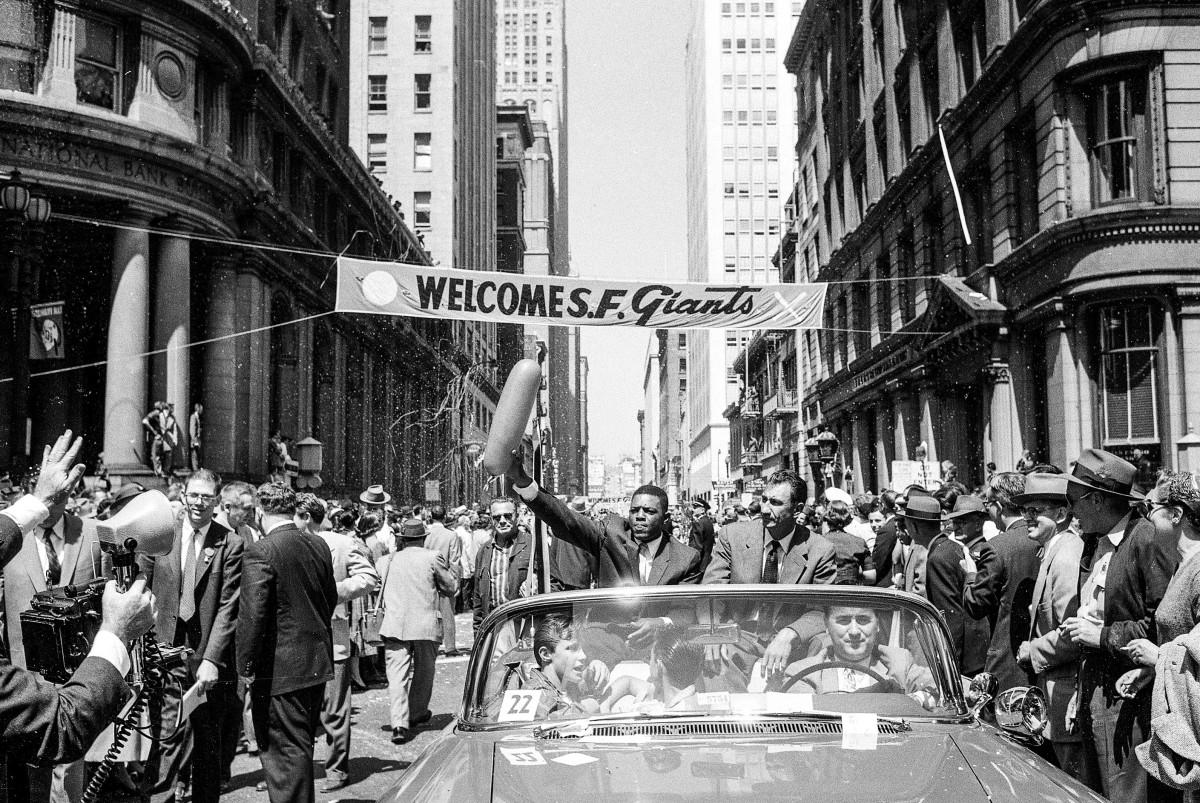
“Peanuts” creator Charles Schulz was an avid baseball fan who lived north of San Francisco, in Santa Rosa, Calif. In 1963, a young filmmaker named Lee Mendelson asked Schulz if he would sit for a documentary portrait. Schulz had declined similar overtures from previous filmmakers, and initially rebuffed this one, too, but then Mendelson asked the cartoonist if he had seen the recent documentary on ABC called A Man Named Mays. Schulz had seen it. “Willie is a hero of mine,” Schulz said to Mendelson, who replied that he had made the Mays film. So Schulz did work with Mendelson on a “Peanuts” documentary and again—two years later—on A Charlie Brown Christmas, beginning a relationship “that would last for 38 years, produce 50 network specials and four feature films,” as Mendelson, who died in 2019, told the Charles M. Schulz Museum, forever binding Charlie Brown and Willie Mays.
Present at the creation of The Tonight Show, midwife to the Charlie Brown holiday specials, Mays was a progenitor of popular culture. Among the non sequitur catchphrases made popular in the late 1960s by Rowan & Martin’s Laugh-In—“Sock it to me” and “Here comes the judge”—was comedian Flip Wilson’s “Hit the ball, Willie.” Everyone knew the Willie in question.
Talk-show host Merv Griffin, his joined palms turned upward, like a thirsty man waiting for rain, once told Mays: “I think Allstate stole that from you.” But the good hands insurance logo predated Mays’s basket-catching ways, though just barely.
So let’s not credit Mays with more than he earned. The stage actress and Giants fan Talullah Bankhead struck the right balance when she said: “There have only been two geniuses in the world—Willie Mays and Willie Shakespeare. But, darling, I think you’d better put Shakespeare first.”

Groucho Marx was another cultural colossus mentioned in Woody Allen’s Manhattan monologue of Things That Make Life Worth Living. On Sept. 12, 1955, Groucho wrote a letter to comedian Fred Allen from his home in Beverly Hills. Marx was a few weeks shy of his 65th birthday, and saw his own mortality measured in another Mays season—another summer bursting like a soap bubble: “I see that the Dodgers won the pennant. I don’t care much either way. What startles me is the swiftness with which another year has rolled around. It seems only a few months since Durocher was a hero and Willie Mays was seriously being considered as a running mate for [Adlai] Stevenson. I must say that this new year has disturbed me only physically and mentally.”
Mays, in his prime, was a hedge against mortality. That’s why his Shea Stadium swan song, his “Autumn in New York,” was so traumatic for so many. Cary Grant retired so he didn’t have to watch himself get older on the screen. Mays did no such thing. On the day in 1972 that a 41-year-old Mays was traded from the Giants to the Mets, a suburban widow spoke to the San Francisco Examiner as if her hero were dead. “He was a beautiful man,” said Mrs. Mary Hughes of suburban Daly City. “I mean, he was spectacular. But his day is gone. Everything ends.” Ashes to ashes. Sic transit gloria mundi. Thus passes all the glory of this world.
But what a glory it was. In 1951, Garry Schumacher, Giants publicity man from World War II to Watergate, said of Mays: “He’s the guy who’ll have us all eating strawberries in the wintertime.” Red Smith liked the line so much he named a collection of his columns “Strawberries in the Wintertime,” an apt description of the vicarious thrills afforded baseball employees and sportswriters of that era, men like New York columnist Bill Corum, who said: “I don’t want to be a millionaire, I just want to live like one.”
Mays made metaphorical millionaires of fans, scribes, ushers and all the other hangers-on and hangers-around who, in the Beatles phrase, followed the sun. Was Willie Mays in “some form of the amusement business”? Was he ever. But Willie Mays wasn’t a singer; he was a song, still is a song, instantly summoned, with a different meaning to everyone who hears it.
On the night he was honored at Shea Stadium in 1973, Mays said to himself, though into a microphone: “Willie, say goodbye to America.” But America can’t say goodbye to him because Willie Mays is a timeless song, like the Beatles’ “Yesterday” or Sinatra’s “The September of My Years,” a standard new to every generation, and thus forever alive, for the song remains long after the singer has left the stage.
More Where Are They Now? Stories:
• The Charmed Season: Revisiting Derek Jeter’s Origin Story
• How Ricky Williams Found Himself in the Planets and the Stars
• We Could Sure Use Dick Cavett Right Now
